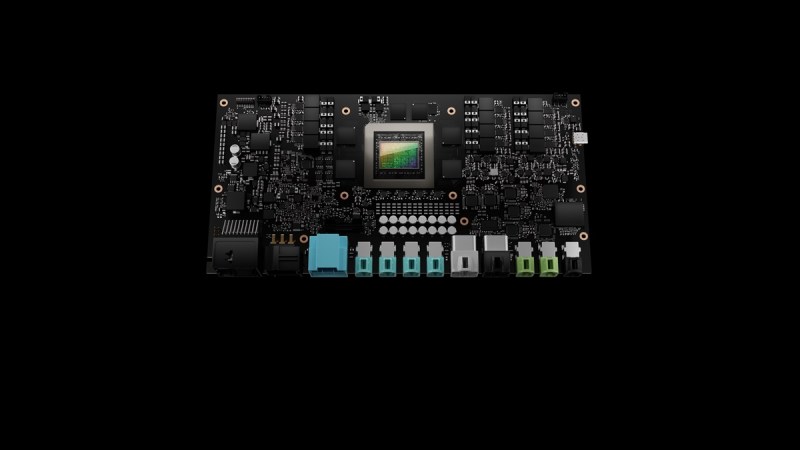Nvidia showcases automotive partners and generative AI for robotics
Nvidia showcased its latest innovations and partnerships for automotive and robotics at CES 2024 today. Nvidia said its lineup of automotive partners has unveiled an array of cutting-edge technology, showcasing the transformative power of AI in automotive design, engineering, and performance. Nvidia revealed the news in an online event today at CES 2024. The trend […]
…

Join leaders in San Francisco on January 10 for an exclusive night of networking, insights, and conversation. Request an invite here.
Nvidia showcased its latest innovations and partnerships for automotive and robotics at CES 2024 today.
Nvidia said its lineup of automotive partners has unveiled an array of cutting-edge technology, showcasing the transformative power of AI in automotive design, engineering, and performance. Nvidia revealed the news in an online event today at CES 2024.
The trend toward generative AI and software-defined computing is rapidly gaining traction within the automotive sector, propelling innovations set to redefine the driving experience in the coming year. Generative AI is also becoming popular in robotics, Nvidia said.
Among the biggest partners is Mercedes-Benz, which has a variety of software-driven features and advancements within the Mercedes-Benz MB.OS, which is showcased in a number of cars.
VB Event
The AI Impact Tour
Getting to an AI Governance Blueprint – Request an invite for the Jan 10 event.

The Concept CLA Class, equipped with Nvidia Drive Orin as its core platform for automated driving, spearheads this display. The company harnesses Nvidia’s Omniverse’s digital twin capabilities for production, revolutionizing the development and operation of manufacturing and assembly facilities.
Nvidia also noted that Ansys showcases its utilization of Nvidia Omniverse to fast-track autonomous vehicle development. Ansys AVxcelerate Sensors, accessible within Nvidia Drive Sim, highlights the fusion of getting data out of sensors for car safety and more.
Cerence introduced CaLLM, a large language model tailored for the automotive industry, forming the foundation for its next-gen in-car computing platform, powered by Nvidia Drive.
Cipia debuted Cabin Sense, a driver and occupancy monitoring system ready for serial production this year, delivering enhanced safety features.
Kodiak’s autonomous truck harnesses Nvidia GPUs for high-performance computing, processing vast data from its sensors to enable autonomous driving. It’s also working with Luminar.
Lenovo also unveiled its vehicle computing roadmap, featuring innovative products based on Nvidia Drive Thor, designed for advanced driver-assistance systems and autonomous driving.

Pebble also showed off Pebble Flow, an electric semi-autonomous travel trailer empowered by Nvidia Drive Orin, marking a significant leap in recreational vehicle technology.
Polestar’s Polestar 3, powered by the Nvidia Drive Orin central core computer, emphasizes cutting-edge automotive computing capabilities and a partnership with Google.
Nvidia also said that electric vehicle makers such as Great Wall Motor (GWM), Zeekr, Li Auto and Xiaomi have also adopted the Nvidia Drive Orin platform to power their intelligent automated-driving systems.
“The transportation industry is embracing centralized compute for highly automated and autonomous driving,” said Xinzhou Wu, vice president of automotive at Nvidia, in a statement. “The AI car computer of choice for today’s intelligent fleets is Nvidia Drive Orin, with automakers increasingly looking to the advanced capabilities and AI performance of its successor, Nvidia Drive Thor, for their future vehicle
roadmaps.”
Nvidia Drive Thor is a next-generation centralized car computer that integrates a wide range of intelligent functions into a single AI compute platform, delivering autonomous driving and parking capabilities, driver and passenger monitoring, and AI cockpit functionality.

The Xiaomi EV will have a model with a driving range of up to 415 miles on a single charge, and another with a range of up to 497 miles. The SU7 will be officially launched in the first half of 2024.
Danny Shapiro, vice president of automotive at Nvidia, said in a press briefing that the transportation industry is undergoing a “seismic shift driven by breakthroughs in accelerated computing, generative AI and digital twins.”
He noted that the software and hardware is based on the Nvidia Drive platform, and design of vehicles is happening in the Nvidia Omniverse platform, which connects 3D worlds in a shared virtual universe.
“We are using that to help automakers transform their entire vehicle workflows,” Shapiro said. “No other company offers a unified platform designed to digitalize every aspect of the vehicle lifecycle, from concept and styling, design and engineering, software and electronics inside the vehicle to the smart factories that built the cars to the autonomous driving technology that’s in these vehicles, and even extends to the retail side.”
He added, “We’re seeing great adoption throughout these automakers and more.”
Nvidia Isaac robotics

Gerard Andrews, product marketing manager for robotics at Nvidia, said in a press briefing that generative AI is coming to Nvidia’s Isaac robotics platform. Companies such as Boston Dynamics will be using it to give robots more flexibility for solving problems in places like warehouses. He said 10,000 companies and 1.2 million developers are using the Nvidia Isaac robotics platform.
Deepu Talla, vice president of robotics and edge computing, said in the online event that generative AI into robotics is speeding up the ability to bring robots from proof of concept to real-world deployment.
Talla gave a peek into the growing use of generative AI in the Nvidia robotics ecosystem, where robotics innovators like Boston Dynamics and Collaborative Robots are changing the landscape of human-robot
interaction.
VentureBeat’s mission is to be a digital town square for technical decision-makers to gain knowledge about transformative enterprise technology and transact. Discover our Briefings.